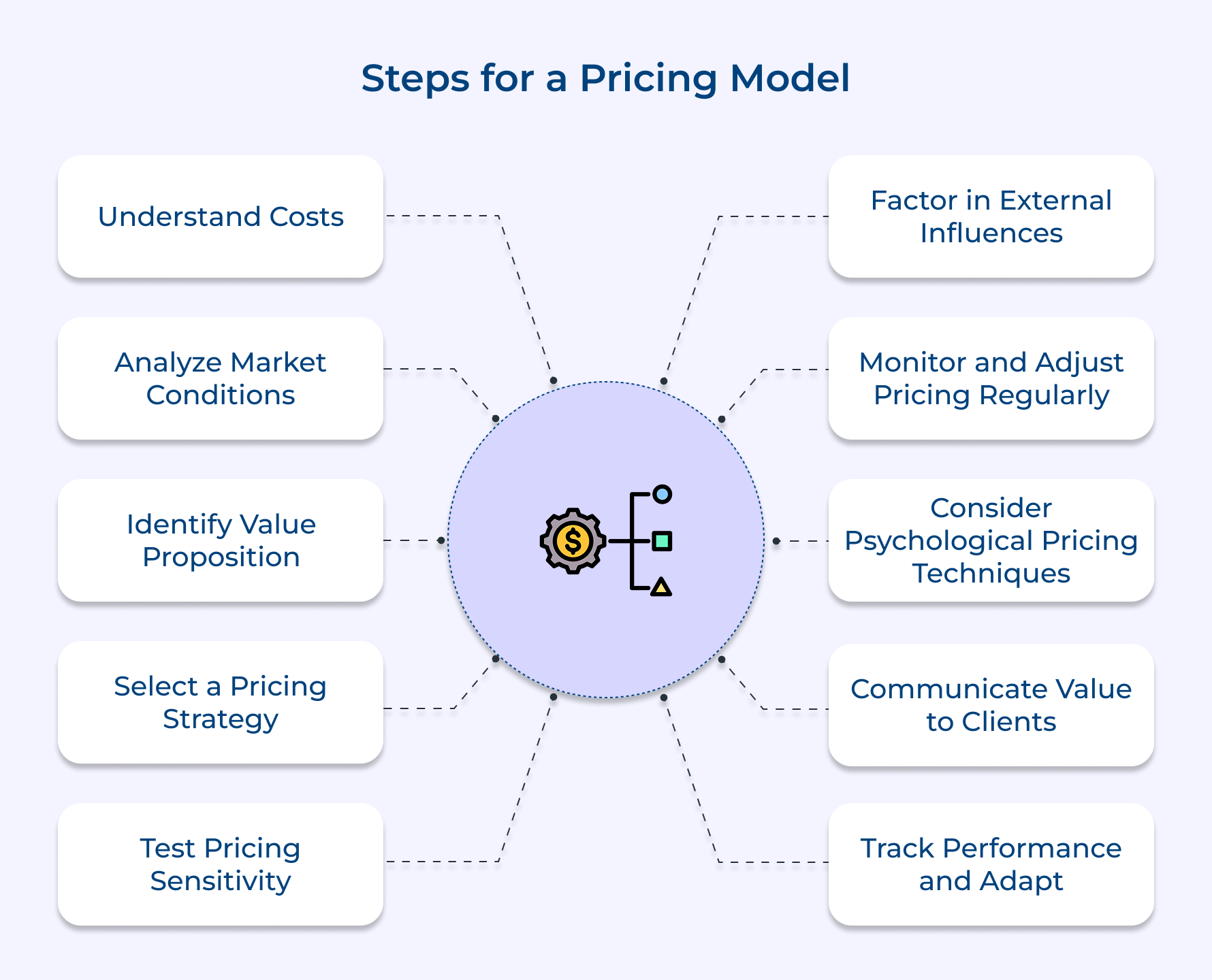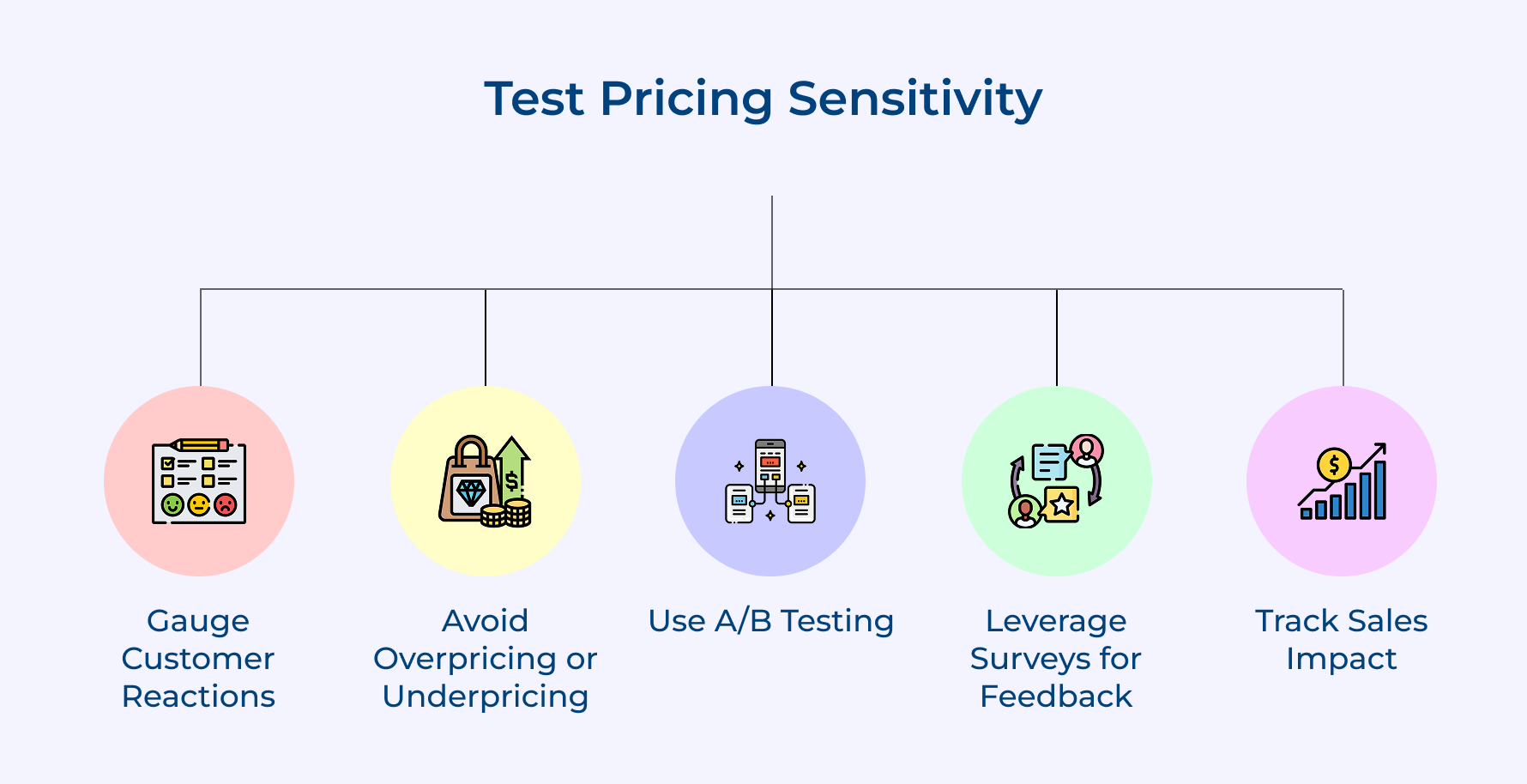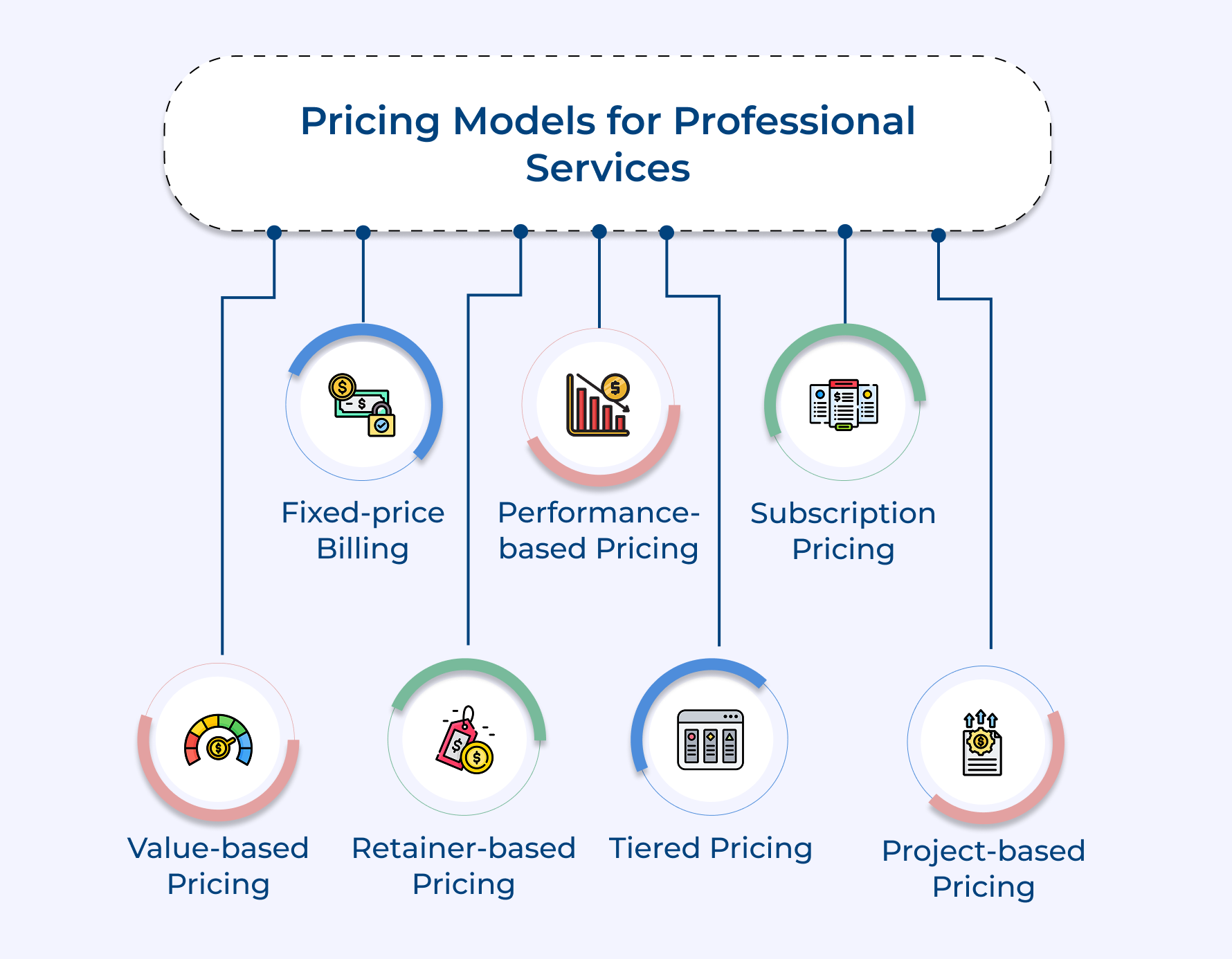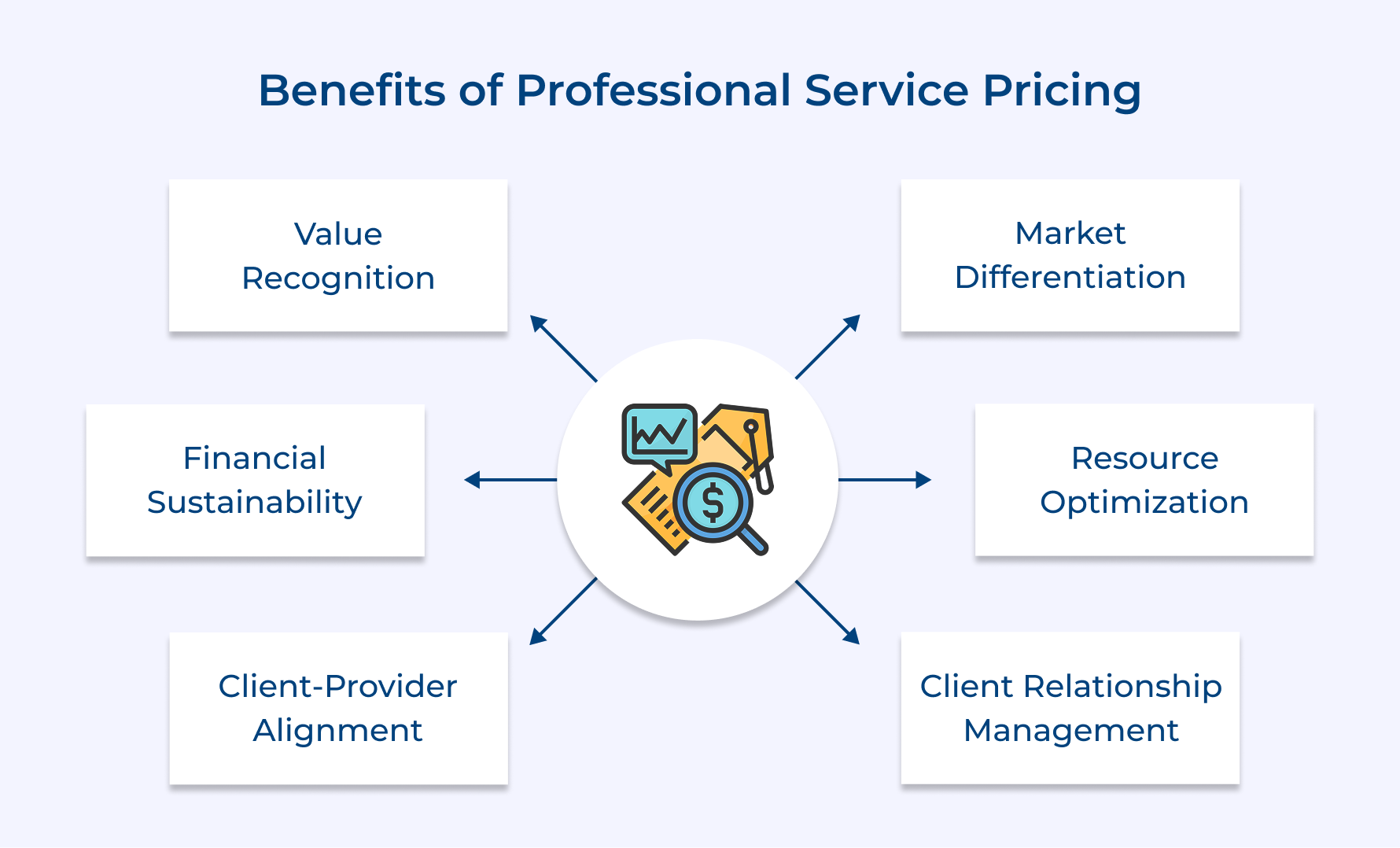10 Steps to Building Effective Professional Service Pricing

Key Highlights:
- Professional service pricing ensures sustainable profitability while maintaining competitiveness.
- Effective pricing strategies enhance market differentiation by positioning services based on value, quality, and expertise rather than cost alone.
- Regularly adjusting your pricing helps balance profitability with customer satisfaction, driving stronger client relationships.
Figuring out the right price for your professional services can feel overwhelming. You want to stay profitable, but you also need to meet client expectations. Get it wrong, and you might end up with confusion, lost opportunities, or even unhappy clients.
Unclear pricing can hurt your business and reputation in the long run, especially in the professional services industry, where trust as well as value matter.
The key is to have a solid professional service pricing strategy that reflects the quality of your services—including any additional services—so you attract the right clients while keeping your business sustainable. Let’s break down how to create a pricing model that works for you!
What is Professional Service Pricing?
Professional service pricing is the strategic process of determining the monetary value for knowledge-based services, expertise, and specialized skills offered by professionals (like consultants, lawyers, accountants, architects, or IT specialists).
Well-structured pricing models help manage client expectations, enable proper resource planning, and support long-term business sustainability. It also plays a crucial role in attracting and retaining both clients as well as talented professionals, as competitive pricing allows firms to invest in talent development along with service quality improvements.
Key objectives:
- Value capture: Ensure pricing reflects the true value delivered to clients through expertise, experience, and outcomes achieved.
- Market positioning: Establish pricing that accurately reflects the firm’s market position and differentiates services from competitors.
- Sustainable profitability: Generate sufficient margins to invest in talent, technology, and service quality improvements while maintaining financial health.
- Client satisfaction: Create pricing structures that align with client expectations and budgets while delivering perceived value for investment.
10 Steps for Building an Effective Pricing Model
Setting the right price for your professional services isn’t just about numbers—it’s about finding the sweet spot between value and profitability. Here’s a simple 10-step guide to help you build a pricing model that works for you and your clients!
1. Understand Your Costs
Before setting your prices, you need to know what it costs to run your business. Here’s why this step is crucial,
- Identify expenses: Break down your fixed costs (rent, salaries, insurance) and variable costs (materials, labor, utilities) to get a clear picture.
- Cover your base price: Your pricing should at least cover all expenses while ensuring a profit—otherwise, you risk financial losses.
- Avoid underpricing: Without knowing your costs, you might charge too little, making it hard to sustain or grow your business.
- Set profitable margins: Understanding your costs helps you determine the right pricing margins to stay competitive while making money.
- Plan for adjustments: Fixed and variable costs fluctuate, so reviewing them regularly ensures your pricing stays profitable over time.
Pro tips:
- Track all expenses in accounting software for precise cost calculations.
- Regularly review and update cost estimates to reflect changes in business operations.
2. Analyze Market Conditions
Setting the right price is all about what makes sense in your industry. That’s where market analysis comes in!
- Check out competitor pricing: See what others in your industry are charging. If similar services cost $100 an hour and you price yours at $50, you might be undervaluing yourself. On the flip side, charging $200 without a clear reason could drive potential clients away.
- Understand customer demand: Are clients looking for premium, high-touch services, or do they prefer budget-friendly options? If you’re a marketing consultant offering strategy sessions, your pricing should reflect if you’re a niche expert or providing general services.
- Stay on top of trends: Industry trends shift. For example, if businesses are investing more in AI-driven solutions, pricing models may adjust to reflect the demand for cutting-edge expertise.
- Differentiate yourself: Pricing isn’t just about matching competitors—it’s about showing value. If you offer personalized service or extra support, you can charge more than someone providing a basic package.
Tips to consider:
- Conduct regular competitor price checks to stay competitive.
- Use customer feedback and surveys to gauge price sensitivity.
3. Identify Your Value Proposition
Your value proposition defines the unique benefits or features of your service that differentiate it from competitors and resonate with customers’ needs.
A strong value proposition justifies your pricing and builds customer loyalty. It allows you to price services higher if you offer additional value, improving profitability while also setting you apart from competitors.
Highlight your unique selling points in marketing and pricing strategies to justify a premium. Tailor your pricing to reflect the value customers receive, showing that your service is worth the cost.
Actionable tips:
- Identify specific customer pain points your service solves and highlight them.
- Use customer testimonials and case studies to reinforce the value you provide.
4. Select a Pricing Strategy
Your pricing strategy is your game plan for setting prices—whether it’s cost-plus, value-based, tiered, or penetration pricing. It helps you structure your pricing in a way that maximizes profits while keeping customers interested.
Picking the right strategy ensures your prices match what customers expect and what the market demands. Plus, it gives you the flexibility to adjust as your business grows.
The key is to choose a strategy that fits your target audience and business goals, then tweak it based on customer feedback, competitor moves, as well as industry trends to stay relevant.
Pro tips:
- Test different pricing strategies in pilot campaigns to see what works best.
- Monitor customer behavior to tweak the strategy based on results.
5. Test Pricing Sensitivity
Not sure if your prices are too high or too low? Pricing sensitivity testing helps you figure out what customers are willing to pay.
- Gauge customer reactions: Test different price points to see how they affect sales and customer interest.
- Avoid overpricing or underpricing: Too high, and you lose customers. Too low, and you leave money on the table. Finding the balance is key!
- Use A/B testing: Offer different prices to different groups and compare which one drives better results.
- Leverage surveys & feedback: Ask your customers directly what they think about your pricing and if they see value in it.
- Track sales & retention: Watch how price changes impact customer loyalty and overall revenue.
Actionable tips:
- Offer limited-time discounts or trials to see customer reactions to price changes.
- Use analytics to track sales and customer feedback after price adjustments.
6. Factor in External Influences
External influences include factors like economic conditions, regulatory changes, or technological advancements that can affect pricing decisions and market dynamics.
Accounting for external influences ensures that your pricing remains competitive and aligned with broader trends. It allows your business to adapt quickly to changes in the economy or regulations, protecting profitability.
Regularly review economic reports and industry forecasts to stay informed. Adjust pricing strategies to reflect shifts in customer purchasing behavior, inflation, or regulatory changes.
Pro tips:
- Monitor industry news and governmental regulations for potential pricing impacts.
- Use market reports to anticipate trends and adapt your pricing strategy in advance.
7. Monitor and Adjust Pricing Regularly
Regularly monitoring and adjusting your pricing ensures it remains competitive as well as aligned with your business goals.
Without regular price reviews, your business risks losing competitiveness or missing out on revenue opportunities. Adapting to market trends ensures sustained profitability and relevance in a changing environment.
Track key performance indicators like sales volume, customer feedback, and competitor pricing regularly to spot when adjustments are needed. Make data-driven adjustments as well as informed decisions based on these insights.
Tips to consider:
- Set quarterly reviews to evaluate pricing performance and make necessary adjustments.
- Use performance metrics like customer retention and sales volume to guide price changes.
8. Consider Psychological Pricing Techniques
Psychological pricing is all about influencing how customers perceive your prices, even if the difference is just a few cents. Tactics like using .99 endings (e.g., $9.99 instead of $10) make prices feel lower, while prestige pricing (round numbers like $100) creates a sense of luxury and exclusivity.
Anchoring is showing a higher original price next to a discounted one—making the new price seem like a steal. These small tweaks tap into subconscious buying behaviors, making products or services feel more attractive without changing their actual value.
Actionable tips:
- Test charm pricing for lower-priced offerings to increase conversion rates.
- Use higher-priced options alongside standard ones to create an “anchor” effect.
9. Communicate Value to Clients
Pricing isn’t just about numbers, it’s about showing clients why your services are worth it. Here’s how to communicate your value effectively:
- Highlight the benefits: Don’t just list what you do; explain how it helps clients achieve their goals.
- Justify your pricing: Show clients the real impact of your services so they see the value behind the cost.
- Use testimonials & case studies: Social proof builds trust and reassures potential clients that they’re making a smart investment.
- Leverage marketing materials: Website copy, brochures, and social media should all reinforce why your services stand out.
- Focus on outcomes, not just features: Clients care more about results than processes—emphasize what they’ll gain by working with you.
Pro tips:
- Highlight the key benefits of your service in proposals and pricing pages.
- Share success stories and customer testimonials to reinforce your value.
10. Track Performance and Adapt
Your pricing strategy isn’t a “set it and forget it” thing, it needs regular check-ins to make sure it’s working. How to refine the strategy?
- Measure what matters: Keep an eye on sales, profit margins, and customer retention to see if your pricing is hitting the mark.
- Check conversion rates: Are potential clients saying yes to your pricing, or are they walking away? This tells you if adjustments are needed.
- Monitor customer lifetime value: If customers keep coming back, your pricing likely reflects strong value. If not, it might need tweaking.
- Watch your acquisition costs: If it’s costing too much to land new clients, consider if your pricing is helping or hurting your bottom line.
- Stay flexible: Market conditions change, and so should your pricing strategy. Use real data to fine-tune and stay competitive.
Tips to consider:
- Use analytics tools to track key pricing performance metrics.
- Set goals for each pricing adjustment and monitor its impact on key indicators.
Achieving the Best ROI: Pricing Models for Professional Services
Setting the right price is key to maximizing profits for professional services companies, but with so many pricing models, how do you choose the best one? Let’s break down the top strategies to help you achieve the best ROI!
1. Value-based Pricing
Value-based pricing is all about aligning your fees with the value or results you bring to the table instead of just charging for your time. This model lets you charge premium prices because clients are willing to pay for tangible outcomes like increased revenue or cost savings.
To make this work, clearly define the value you provide and tie your fees directly to measurable results. Clients should see how your service directly impacts their bottom line.
2. Fixed-price Billing
Both you and your clients know exactly what to expect with fixed-price billing. This model is great for well-defined projects because it allows you to control costs and allocate resources efficiently, which can boost your profitability.
Just be sure to clearly define the scope, deliverables, and timelines upfront to avoid any surprises or scope creep that could eat into your margins.
3. Retainer-based Pricing
Retainers offer stable, recurring revenue, making it easier to predict your cash flow. It’s perfect for services that require ongoing work, like consulting or legal advice. Retainers also build long-term relationships with clients, which can lead to loyalty and a higher ROI over time.
Be clear about the scope of services and ensure your clients understand the ongoing value they’ll receive from the retainer. Don’t forget to review the agreement regularly to make sure it still meets both your and the client’s needs.
4. Performance-based Pricing
This pricing model ties your success to your client’s success. If they win, you win—typically by earning a share of the performance gains, like increased revenue or reduced costs. It’s a great way to drive higher ROI, especially when your results exceed expectations.
Set clear, measurable goals from the start and agree on the performance metrics that will determine success. Make sure both you and the client have realistic expectations to avoid any surprises down the road.
5. Tiered Pricing
Tiered pricing is all about flexibility. You offer different levels of service at various price points, which helps you cater to both budget-conscious clients and those willing to pay more for premium offerings.
Creating distinct tiers with added value at each level, you can appeal to a larger audience and drive higher ROI. Be sure your higher tiers justify the additional cost, either with enhanced service or exclusive features, and use tiered pricing as a way to upsell customized packages to fit client needs.
6. Subscription Pricing
Subscription pricing is ideal for services that require ongoing support, like consulting or marketing services. This model gives you predictable, recurring revenue, making it easier to maintain a steady cash flow.
It’s great for long-term relationships and helps boost client retention. To make it work, offer clear benefits to subscribing, like continuous updates or priority support, as well as ensure your clients see value in staying subscribed to prevent churn.
7. Project-based Pricing
For well-defined, finite projects, project-based pricing is your go-to. You set a price based on the scope and complexity of the work, which can lead to high ROI if you plan as well as execute efficiently.
The key is to have a detailed project plan with specific deliverables and timelines to keep everything on track. Price the project based on anticipated time as well as resources, but stay flexible enough to accommodate any client changes without affecting your profitability.
Benefits of Professional Service Pricing
Choosing the right pricing model can make all the difference for professional services businesses, impacting both profitability and client satisfaction. Let’s explore the benefits of getting your pricing strategy right!
Value Recognition
Professional pricing helps establish and communicate the true value of expertise as well as specialized knowledge. Market-appropriate pricing signals quality and expertise level to clients, preventing services from being viewed as commodities. Clients better understand and appreciate the value received when pricing aligns with service quality.
Financial Sustainability
Proper pricing ensures sustainable business operations. Fair compensation allows firms to invest in talent development, technology upgrades, and service improvements. Healthy profit margins support long-term growth and innovation, along with the ability to weather market fluctuations without compromising service quality.
Client-Provider Alignment
Strategic pricing creates clear expectations between service providers and clients. Well-structured pricing models help define service scope, deliverables, and expected outcomes. Price points serve as natural qualifiers, attracting clients who value quality and expertise over the lowest cost.
Market Differentiation
Pricing strategies help position services effectively in the market. Premium pricing can signal specialized expertise or unique service offerings. Price differentiation allows firms to target specific market segments and compete based on value rather than cost alone.
Resource Optimization
Effective pricing enables optimal resource allocation. Rates that reflect true service costs help firms assign appropriate resources to projects. Proper pricing prevents resource underutilization or overextension, leading to more efficient operations.
Client Relationship Management
Strategic pricing supports building strong client relationships. Clear pricing structures prevent misunderstandings about service value and scope. Fair pricing allows firms to focus on delivering value rather than constantly justifying costs.
Boosting Profitability Through Strategic Pricing
Professional services pricing requires thoughtful analysis and strategic planning. Setting accurate rates not only ensures you stay competitive but also helps meet client expectations, building trust and long-term relationships. A well-crafted pricing strategy drives sustainable business growth while maintaining profitability.
Regularly evaluating and adjusting your rates is key to balancing financial success with client satisfaction. By staying flexible and responsive to market conditions as well as client needs, you can ensure your pricing strategy evolves with your business, helping you thrive in an increasingly competitive landscape and securing your position as a trusted industry leader.
Limit time — not creativity
Everything you need for customer support, marketing & sales.
Neeti Singh is a passionate content writer at Kooper, where he transforms complex concepts into clear, engaging and actionable content. With a keen eye for detail and a love for technology, Tushar Joshi crafts blog posts, guides and articles that help readers navigate the fast-evolving world of software solutions.



